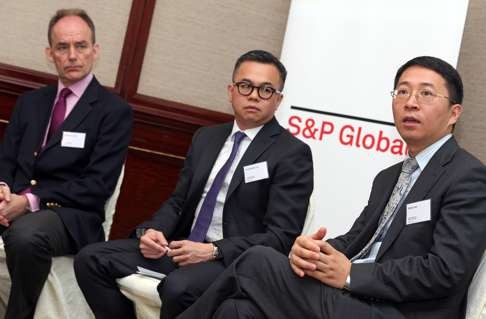
Bond defaults set to rise among Chinese companies, says S&P Global Ratings
Reform efforts are picking up pace among state-owned enterprises, leading to an increase in bond default risk, analysts say
Efforts to reform China’s struggling state-owned enterprises has led to a higher risk of companies missing debt payments, but that hasn’t dampened investors’ appetite in China’s bond market, analysts say.
“We’re seeing new defaults across all instruments, from private companies to state-owned enterprises (SOEs), there’s no escape,” said Christopher Lee, managing director and chief ratings officer at S&P Global Ratings.
Defaults, or default risks, refer to companies not being able to pay back investors on debt obligations, usually in the bond market – where companies issue notes at a fixed rate of interest to borrow money.
More than 10 bond issuers in China, including state-owned enterprises and private companies, have defaulted on bond payments this year, according to S&P.
“This is already a record high compared to the same time last year. It’s a new high [and] a new trend,” he said.
Lee explained that lenders are taking note of China’s “supply-side reforms”, which were implemented late last year, and are targeted at closing and liquidating industrial enterprises to tackle overcapacity problems and to reduce leverage.
“I think [the policy] was taken as a cue by some lenders to stop providing liquidity for some of these struggling companies. We’ve seen that translate into an increase of defaults in the SOE sector,” he said.

China is among one of the top indebted countries in the world, with an estimated debt of US$25 trillion (HK$194 trillion) and a debt-to-GDP ratio at around 254 per cent, according to figures from Standard Chartered.
China’s corporate debt, which accounts for more than half of China’s debt-to-economy ratio, is largely fuelled by SOEs.
S&P Global Ratings said they expect the default risk to continue to rise this year.
Despite this, investors are willing to continue to increase their exposure in their bond portfolios in China, a survey showed.
A survey conducted by East & Partners, a banking market research firm, indicated that more than 80 per cent of the respondents expect to see most defaults in China, compared to other Asia-Pacific countries.
However, the same survey shows that China still comes out as the top country that investors expect to increase their exposure in most significantly in the next 12 months.
The survey was conducted by telephone with 151 top chief investment officers and heads of fixed income around the world in March.
Lee said that although the market has been pricing in the default risks, the amount of defaults only accounts for a small percentage of the market.
“The amount that defaulted is less than 100 billion [yuan], it’s less than 1 per cent of the total bond outstanding in China,” said Lee.

